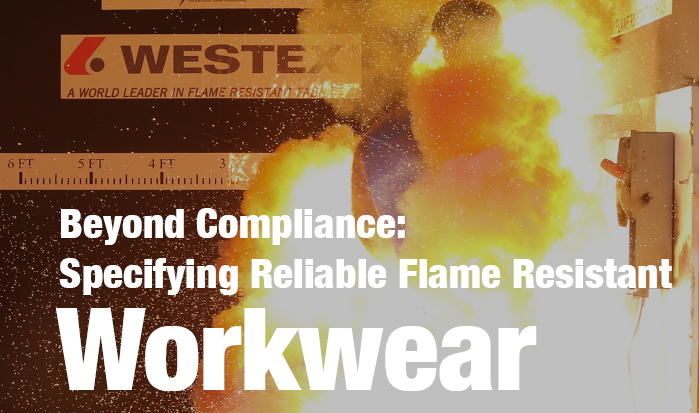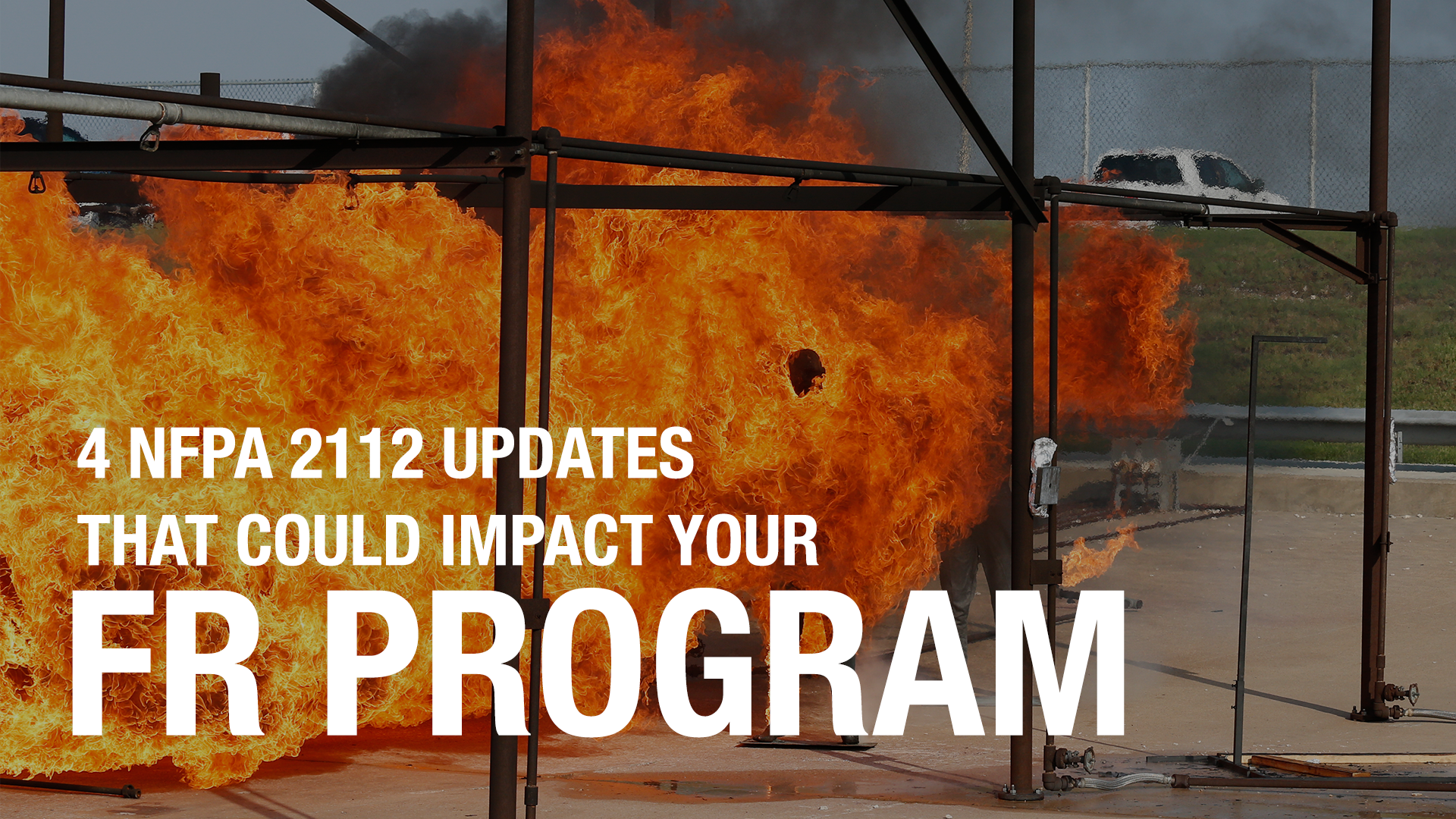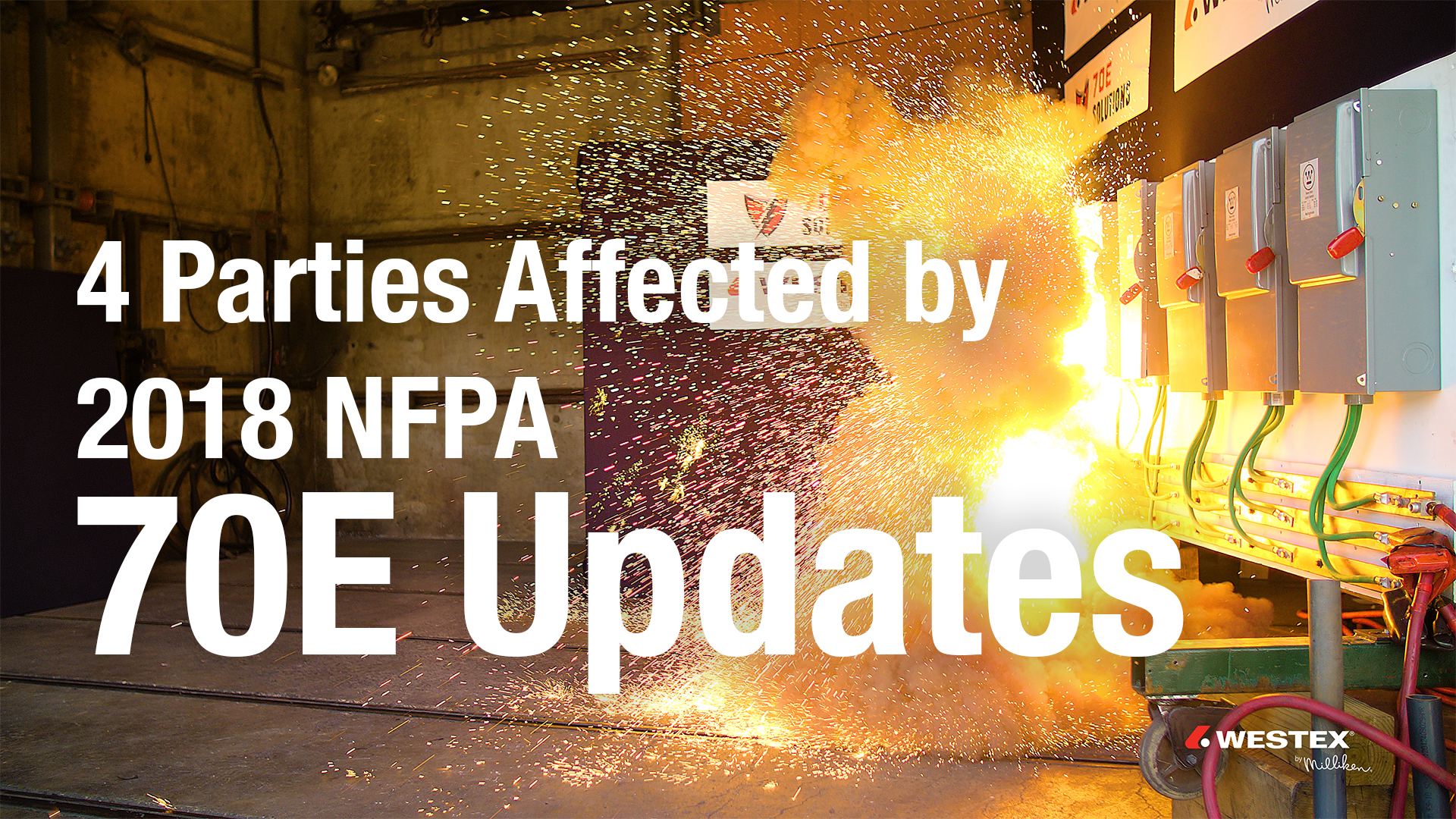
Beyond Compliance: Specifying Reliable FR/AR Workwear
GeneralFR Fabric EducationFR Technical 11 Apr 2018
Know what you are truly buying: The flame resistant, arc rated (FR/AR) fabric in workwear is the single largest factor in determining the garment’s protection level, comfort, and overall value.
Every day, workers in electrical maintenance, utility, oil and gas, petrochemical, and steel industries work in hazardous environments. Unexpected and highly dangerous arc flash and flash fire events can occur without warning and may result in severe or fatal burn injuries.
In the United States, there are an estimated five to 10 arc flash explosions every day in electrical equipment.1 Include the inherent danger of working around highly flammable materials, such as those within oil and gas industries, and the need for effective personal protective equipment (PPE) through FR/AR apparel cannot be ignored.
Moreover, non-FR workwear exacerbates severe burn injuries. Non-FR clothing can ignite and will continue to burn even after the source of ignition has been removed, adversely causing more serious burns to skin covered with clothing.
Flame resistant workwear fabrics are uniquely engineered to self-extinguish and reduce burn injuries. Specifying fabrics for your PPE program from trusted suppliers for everyday wear is critical to protect yourself, and your employees, against potential arc flash and flash fire burn injuries.
However, not all FR garments are created equal. The quality of fabric is the most important aspect of a garment when it comes to FR/AR apparel. This article explores why you should look beyond industry standards to specify FR fabrics to adequately protect workers from dangerous arc flash and flash fire hazards.
Industry Hazards and Protective Standards Electrical arc flash and flash fire hazards prove the critical need for effective protective apparel to be worn every day by industrial workers. Electrical maintenance and utility workers uniquely face risks of electrical arc flashes, while workers in oil and gas industries must be prepared against unanticipated flash fires.
Arc Flash Arc flashes are electrical explosions or discharges that travel through the air between conductors or from a conductor to ground. These arcs can reach upwards of 35,000 degrees in temperature, resulting in significant and severe burns, among other injuries.2
The National Electrical Safety Code® (NESC) requires companies to perform a hazard risk analysis for employees who work on or near energized parts of equipment. If the assessment determines that present energies exceed 2 cal/cm2, then workers shall wear protective, arc rated FR/AR clothing with a proven arc rating equal to or greater than the anticipated level of energy.
The NFPA 70E Standard, known as “recognized industry practice” by the Occupational Safety and Health Administration (OSHA), also provides guidance for protection against this hazard. To comply, employers are required to perform a hazard analysis. Where required, employees shall wear FR/AR protective clothing that meets ASTM F1506—the minimum performance specifications for protective clothing for workers exposed to the risk of electrical arc flash.
There are two methods utilized for the selection of arc flash PPE in NFPA 70E:
- The incident energy analysis method
- The Arc Flash PPE Category method (or the table method)
To utilize the arc flash PPE category method, qualified personnel need to determine if their facility’s electrical equipment parameters, such as the maximum available fault current and maximum clearing time, meet the parameters for that type of equipment as listed in Table 130.7 (C) (15) (a). If the parameters of their equipment do not meet the parameters listed in the table, then the incident energy analysis method should be used. Either method, but not both methods, shall be permitted to be used on the same piece of electrical equipment.
The incident energy analysis method is much as it sounds. The potential incident energies of various pieces of equipment are calculated utilizing formulas and/or commercially available software. The clothing and clothing systems chosen must have an arc rating equal to or greater than the anticipated level of energy calculated. The difficulty of this method is related to the complexity of the electrical system.
The Arc Flash PPE Category method within NFPA 70E has characterized FR/AR garments and garment systems by PPE Categories. Various look up tables show typical equipment, their operating conditions, and the required PPE Category. For example, PPE Category 2 requires that the arc rating be 8 cal/cm2 or above and PPE Category 3 requires an arc rating of 25 cal/cm2 or above.
Flash Fire A flash fire is a fire that spreads by means of a flame front rapidly through a diffuse fuel (NFPA 2112). Workers in the oil, gas, chemical, and petrochemical industries can be at risk for flash fires. NFPA 2112 is the industry standard on FR/AR garments that protect industrial personnel against flash fire. The companion standard, NFPA 2113, provides guidance on the selection, care, use, and maintenance of those garments.
While setting clear guides for fabric and garment testing, NFPA 2112 provides minimum performance criteria. One requirement of NFPA 2112 is that the FR/AR fabric be tested in a three-second flash fire per ASTM F1930 test guidelines and provide protection up to 50 percent total body burn. Naturally, this criterion encompasses a large variation of performance.
For workers exposed to flash fire hazards, a certification to NFPA 2112 is really a starting point. Because all fabrics with less than 50 percent burn can be certified to NFPA 2112, it is important understand there can be a variance in body burn results of fabrics that are commonly available in the marketplace today. Knowing how your fabric performs is critical in minimizing burn injury.
Why Some FR/AR Fabrics Are Not Sufficient While flame resistance performance is an imperative quality of your FR/AR apparel, there are other key factors to consider that greatly affect the success of an FR/AR program.
Not all FR/AR fabrics are equal in terms of comfort, shrinkage, long-term performance, washability, and reliability. And when FR/AR apparel isn’t comfortable or enjoyable to move in, workers won’t wear it properly—or, worse, they won’t wear FR/AR apparel at all. The most important factor is that your FR/AR workwear is comfortable and guaranteed flame resistant for the life of the garment.
Specify the Fabric for FR/AR Program Success As discussed, when developing an effective FR/AR apparel program, standards are only the starting point. Know what you are truly buying: The FR/AR fabric in workwear is the single largest factor in determining the garment’s protection level, comfort, and overall value. Work through the following four steps to go beyond compliance standards to specify reliable FR/AR workwear:
- Research environmental risks. Gain a deep understanding of your work environment and the specific issues that impact worker safety. Begin with identifying the risks at hand, such as arc flash risks versus flash fires, as the apparel needs are different.
The standards for which you are specifying fabrics must apply to your individual work environment. For example, FR/AR fabrics that meet PPE Category 2 are irrelevant in the oil and gas industries because the arc rating standard addresses electrical arc flash, not flash fire hazards.
External factors, such as weather, also should be considered. The fabric and fabric system needs in diverse climates can be very different. Workers in cold, northern climates may need insulated products for their daily work, whereas southern climates may dictate a single layer.
- Evaluate fabric options. When evaluating viable options for FR/AR fabric, don't settle for minimum compliance. Make sure the FR/AR fabric is guaranteed flame resistant for the life of the garment and know the fabric’s protective insulative numbers (arc rating and percent body burn at 3 seconds).
- Understand the fabric's performance. There is a vast disparity between products that comply with NFPA 2112 and NFPA 70E. Compliance is a starting point, then individual fabric performance should be evaluated to help ensure you are adequately protecting workers.
- Specify fabric by brand name. Brand-name FR/AR textiles carry a trusted reputation because they have been market proven to protect workers. Brand-name reputations also help you know exactly what you are purchasing. Not all FR/AR fabrics, or constructions, such as 88/12 fiber blends, are the same. There are significant differences in how similar fabrics with similar fiber constructions perform. Rely on proven brand-name reputations to gauge the effectiveness of FR/AR performance, backed up with third-party certification.
Understanding the nuances of what is required to adequately protect against arc flash and flash fire burn injuries can seem daunting. However, true protection from FR/AR apparel comes down to understanding the risks of your work environment and knowing the quality and reliability of the fabric. By researching your specific environmental risks, evaluating FR/AR fabric options, understanding their performance through third-party testing, and specifying trusted brand names, you can create a reliable FR/AR PPE program that goes beyond compliance.
References
- Richard B. Campbell, ScD. and David A. Dini, P.E., “Occupational Injuries From Electrical Shock and Arc Flash Events,” (Quincy: Fire Protection Research Foundation, 2015), 6.
- Campbell and Dini, “Occupational Injuries From Electrical Shock and Arc Flash Events,” 1.
This article originally appeared in the March 2017 issue of Occupational Health & Safety.


